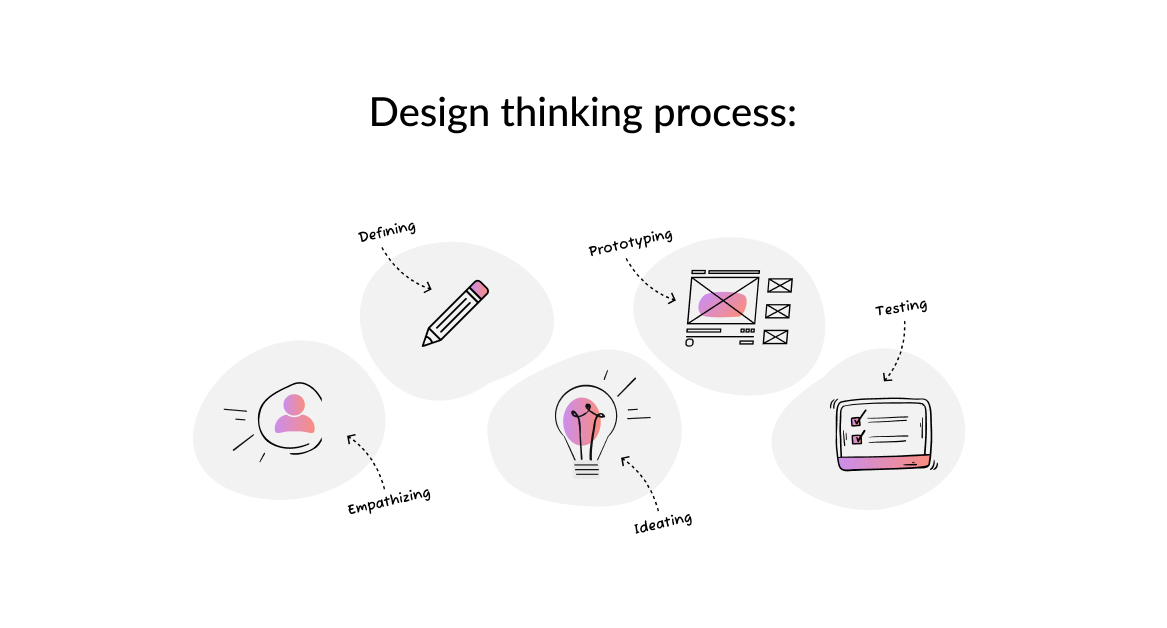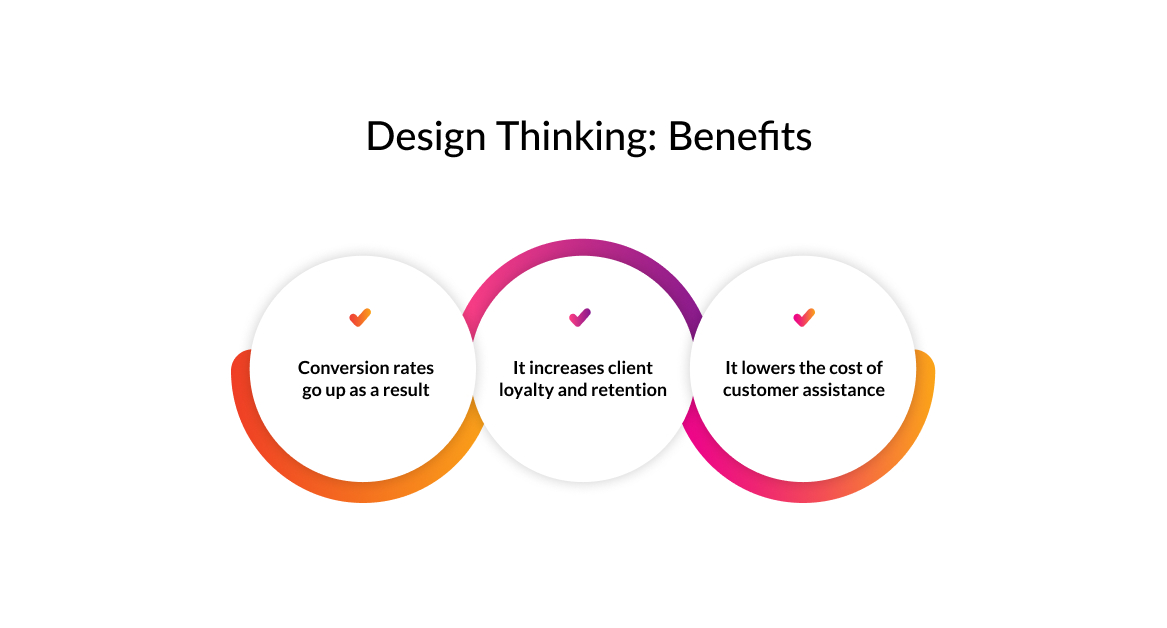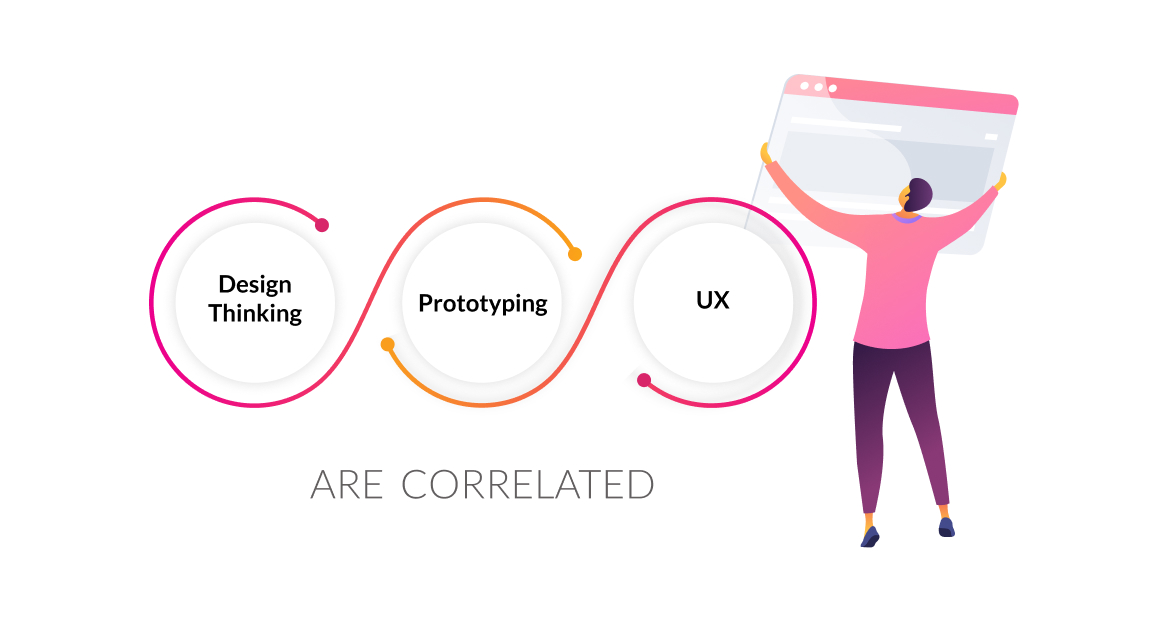Design Thinking and UX share a lot of similarities. Similar to UX, design thinking is an iterative process in which concepts are given life based on the requirements, ideas, and actions of actual people.
Regardless of the company or sector, the most valued products typically help consumers solve issues. People are willing to spend money to have their concerns addressed for them, which is a fundamental notion taught in the majority of commerce schools. A tool that simplifies individuals' lives while they experience the least amount of stress is something you can build from the UX perspective.
A technique for achieving this goal is the design thinking technique. It's only natural for UX designers to aim to resolve people's issues, whatever they may be, yet doing so can be difficult. In the end, how to recognize issues in people's daily lives?
Quintagroup can always help you hire advanced UI/UX experts, Business Analysts who will willingly help your company with prototyping and design thinking. We might as well provide you with a consultation. Contact us for top-notch services.
Designer's Approach to Problem-Solving
Due to the iterative, non-linear, and user-centered nature of the design thinking process, it is a component of all businesses, regardless of industry. Therefore, it helps the designers to conceive in terms of solutions rather than problems.
It serves as a framework for UX designers, who utilize it as a set of tools to address issues. The designers create exceptional, boundary-pushing inventions thanks to this solution-based mindset.
There are five steps in the design thinking process:
- empathizing
- defining
- ideating
- prototyping
- testing
These steps are logically used by designers to provide a user-focused solution to the issue.
What Are the Fundamental Tenets of Design Thinking?
1. Feel empathy
Empathy is the foundation of the design thinking process, which focuses on the requirements of the users. You place yourself in the user's position at this point to understand the clients and their wants. You must comprehend people's daily routines, requirements, and thought processes, among other things. Data collection methods are the best techniques.
At this point, the general rule is to steer clear of making assumptions about user needs. Additionally, you want to concentrate on the data gained from the surveys and interviews. It can be challenging to resist generalizing, yet doing so is essential for successful UX design because hypotheses can result in useless products.
At this stage, empathy map and information architecture could be useful tools.
Making informed design decisions requires being able to profile your intended users and build a basic user persona. You should consider the needs, objectives, aspirations, behavior, routines, and other factors of your users.
They divided the empathy map into four quadrants: Says, Thinks, Feels, and Does. This tool is intended to articulate what we know about a specific sort of user.
In this manner, a designer gains an understanding of the user's viewpoint on the duties associated with the product.
2. Define
Design Thinking practitioners must precisely characterize the issues that users are experiencing after connecting and engaging. This process entails analyzing user research, preparing logistical details, and identifying potential barriers.
Problem statements should focus on the user and be specific. When business objectives take precedence over user demands in issue statements, design thinking is sidetracked.

3. Ideate
Once challenges have been identified, Design Thinking moves on to ideation.
There are many other exercises, including:
- mind mapping
- word banking
- brainstorming
The aim is to swiftly visualize ideas. Simple writing instruments like post-its and markers will do. Also, keep in mind that ideation and refining cannot happen at the same time.
4. Prototyping
Though they don't have to be elaborate, prototypes are great tools to advance ideation attempts.
They could include:
- physical models
- sketches
- interactive wireframes (Figma, Balsamiq)
- doodles
Early and cost-effective feasibility evaluation is made feasible by prototypes for UI/UX designers.
Of course, a lot of the collaborative design tools available now have advanced prototyping features, like animation. They may, however, also lead designers to waste time perfecting ideas that will never be embodied.
5. Test (Usability Testing)
Consumers are invited to take part in controlled testing at the final round of design thinking. A supervisor oversees the test throughout this time, and participants speak aloud while utilizing a product. The design team selects which concerns to solve after receiving feedback, and changes are implemented.
A reality check for many designers comes through usability testing to ensure a sufficient user flow. Everyone is forced to consider how much feedback to incorporate, while also avoiding feature creep when frustrating UX problems come to light.
Why Use Design Thinking for User Experience?
Here are several reasons to use design thinking while creating your project:
- As it is difficult to comprehend the customers for whom we are offering the answers, and you can't lose sight of the genuine concern, UX designers must comprehend the design thinking process.
- It forces you to view things from the perspective of the user and is wholly user-centric. At this point, you simply consider the actual issues and give the product no consideration.
- Design thinking concentrates on discovering solutions, while UX design aids to embody these solutions. The three primary components of a strong UX design are utility, accessibility, and attractiveness.
- The goal of design thinking for UX is to empower designers to produce ground-breaking advancements. Because of the steps in the thought process, designers can interrupt at any point to improve the solution and learn new things quickly. Thus, it lessens the risks related to novel concepts and goods.
Design Thinking at Work: Benefits

Every firm operates on a perpetual list of objectives and the introduction of new goods. The creation of a new product can be extremely expensive and, if it fails, costly. Design thinking thereby prevents losses by concentrating on the problem-solving needs of the public. The ROI of design thinking includes immediate cost reductions, and the product benefits both the firm and the individuals using it:
- Conversion rates go up as a result;
- It increases client loyalty and retention;
- It lowers the cost of customer assistance.
Design Thinking, Prototyping, and UX Are Correlated
One approach to problem-solving is design thinking. Ideas are given life through an iterative process based on the requirements, ideas, and actions of actual users. Design Thinking is not practiced if designers and users are not working together.
The multiplicity of design techniques is a strength. No strategy functions for every designer, group, or business. No method can identify all users' needs. Design thinking is a methodology, not a magic trick, but because it concentrates on customers, it pairs well with UX design.
Quintagroup is always happy to assist you with finding skilled UI/UX professionals, BA, and other personnel that are ready to aid your business with prototypes and design thinking. For exceptional assistance, get in touch with us.

